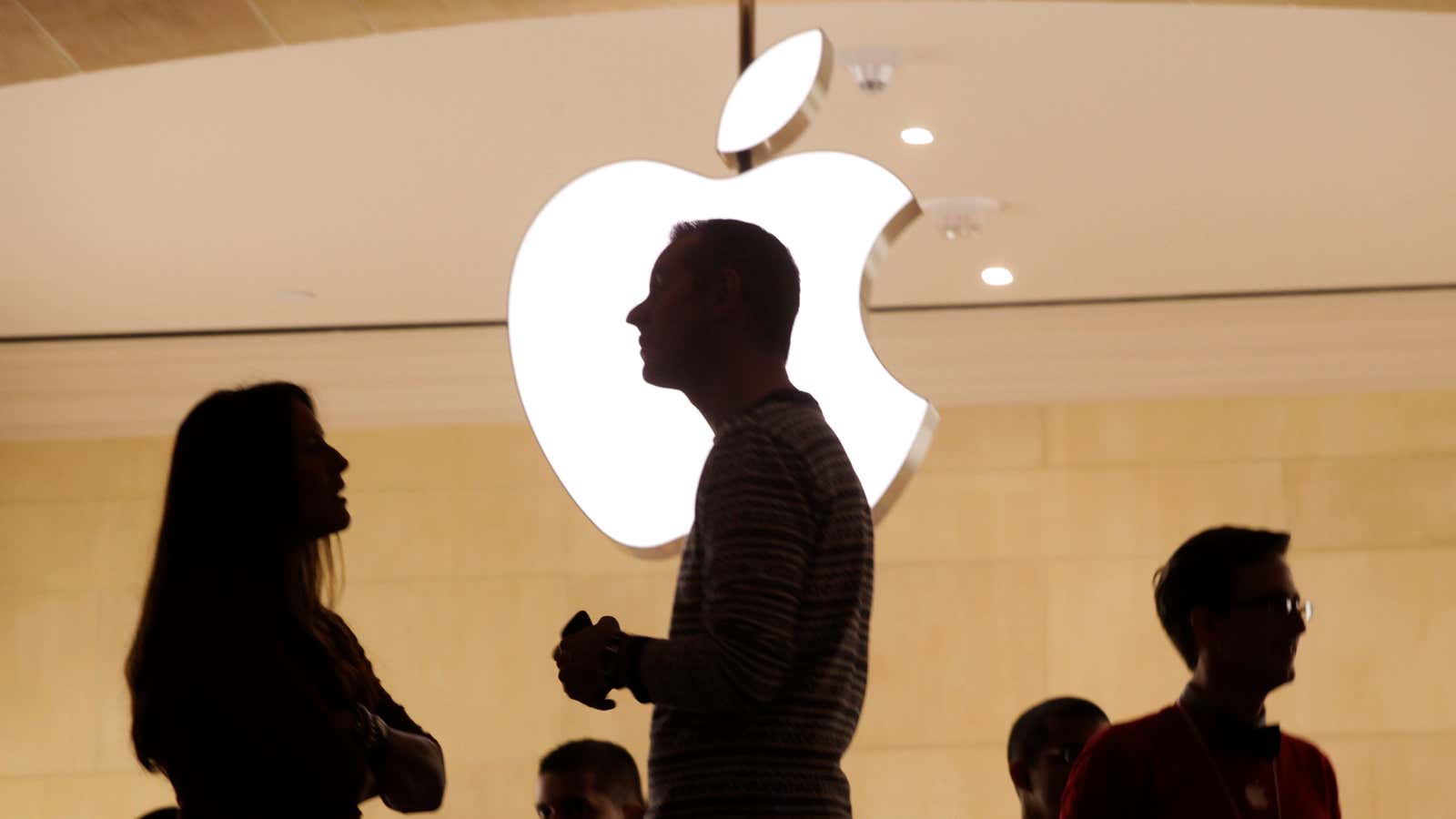Apple has been on a tear in recent quarters, returning to growth, and finding massive revenue streams beyond the all-consuming iPhone.
After posting $45.4 billion in revenue last quarter—a gain of 7% over the same quarter last year—Apple’s stock has soared. Every single one of its businesses—the iPhone, the iPad, Mac computers, services, and its miscellaneous “Other products” bucket—is now the size of a Fortune 500 company. There’s no indication that the company will slow down anytime soon.
Apple will report its fourth-quarter earnings (its fiscal year ends in September) after the market closes on Nov. 2, and Wall Street is expecting another bumper quarter. Analysts polled by FactSet estimated that Apple’s revenue for the quarter will be around $50.7 billion, which would be an 8% increase over the $46.9 billion it generated in the same quarter in 2016.
The overwhelming majority of Apple’s revenue—at least 50% of its sales every quarter for the last four years—comes from iPhone sales. This quarter is generally a relatively fallow one for Apple, as it’s the last quarter before the holiday season. For the last nine years it’s also been the last quarter before a new iPhone has been on sale, meaning many people will hold off buying new phones until the latest ones are available.
Apple’s iPhone 8 and 8 Plus went on sale Sept. 22 in the US, so we’ll likely get an update about how the first weekend of sales went, but Apple’s newest flagship phone, the iPhone X, does not debut in stores until Nov. 3, although it was announced at the same time as the 8. Expect CEO Tim Cook to give some immeasurable platitude (like “best weekend yet!” or “off the charts!”) about how the pre-orders went for the iPhone X.
The real test will be how Apple fares in the quarter, given that iPhone sales are traditionally slow. Its services business, which comprises sales of AppleCare, music, apps, and movies, as well as iCloud and Apple Music subscriptions, has been on a tear in recent quarters, generating $21.5 billion through the first three quarters of the year, up 19% from the $18 billion in the same period the year before. Look to see how resilient this sector is this quarter to gauge how well Apple is keeping customers locked into its ecosystem, beyond cyclical hardware purchases.
It’s also worth checking how Apple is faring outside of its home territory of the Americas. Major growth areas, such as China and India, have not proven to be quite the boon the company was expecting for a combination of regulatory and socio-economic reasons. Look to see whether Apple has started to crack selling its more affordable (read: older) models in India, and whether China can retake from Europe its place as Apple’s second-largest region.
Other areas of growth for Apple can come from the rest of its product stable. This past quarter was when students generally return to school in many of Apple’s markets, so look to see whether there’s been any uptick in tablet or computer sales, and whether the iPad Pro has been as much of a hit with consumers as it was with reviewers.
The same can be said for Apple’s “other products” bucket, which includes sales of Beats headphones, AirPods, (increasingly few) iPods, Apple Watches, and other accessories. Apple released a new Apple Watch along with its new iPhones in September, so it likely won’t have affected this bucket much, but it’s entirely possible that customers wanted to get out and be more active as the summer months waned, picking up new wearables and headphones to track their fitness.
